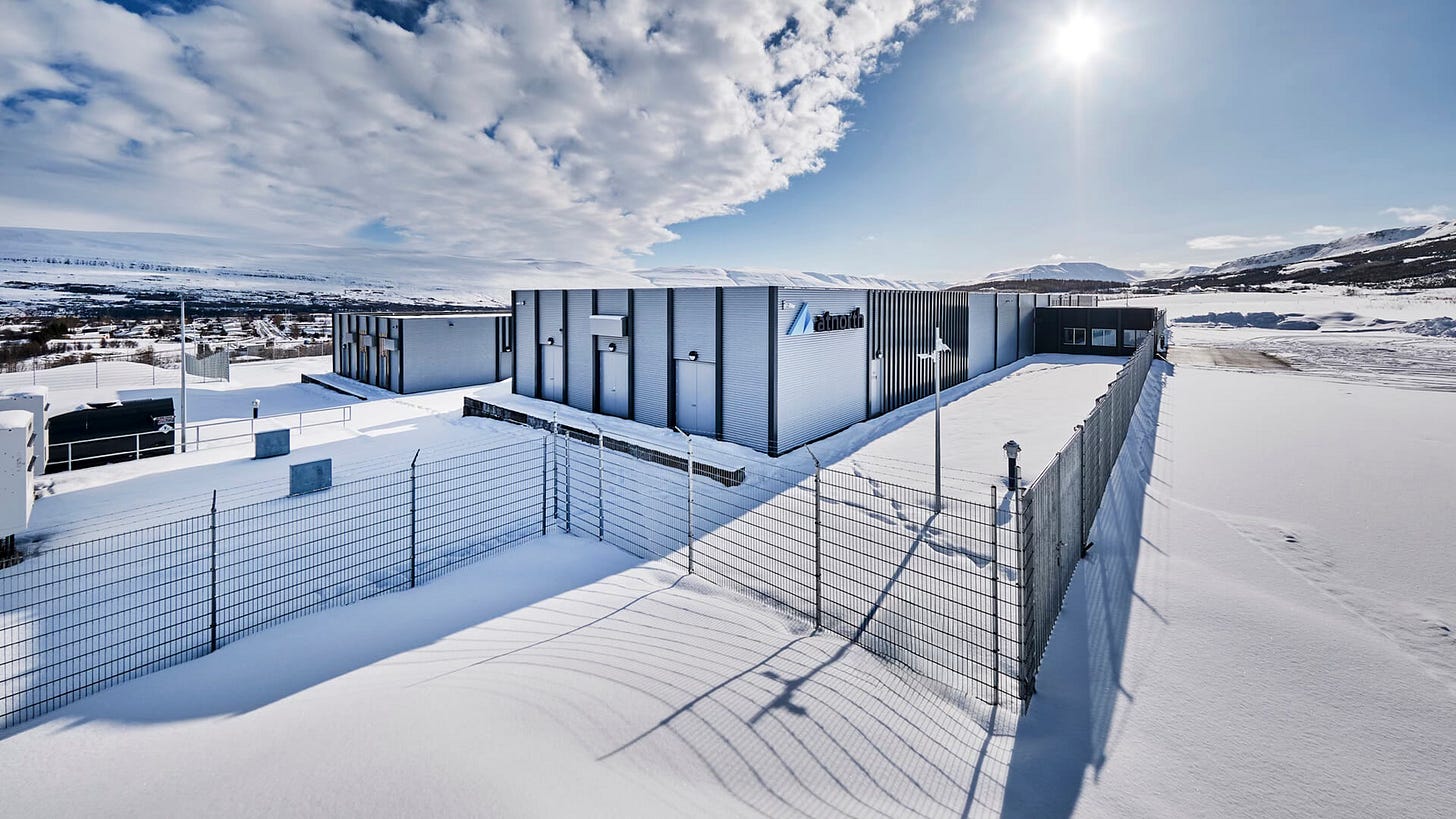Never Enough
What Iceland teaches about the limitless demands of climate maximalists.
“The fact that logic cannot satisfy us awakens an almost insatiable hunger for the irrational.” – A. N. Wilson
By any objective measure, Iceland is already a carbon-counting utopia. The island nation’s electricity grid is carbon-free, deriving 70% of its power from hydroelectric plants and 30% from geothermal sources. Both provide steady baseload capacity, while the water stored behind Iceland’s dams also allows grid operators to quickly adjust generation to match demand. This combination of reliable baseload and ample dispatchability is enviable—a solid foundation that supports Iceland’s impressive nominal GDP per capita of roughly $90,000.
Beyond its electricity grid, Iceland heats over 90% of its homes using what is arguably the most sophisticated and sustainable geothermal district heating system in the world. The country pioneered city-wide heating more than a century ago, and its network of deeply drilled wells, advanced heat exchangers, and other cutting-edge technologies allows its citizens to endure harsh winters with nary a household boiler. Even the 10% of mostly rural homes not connected to this network rely on electric heating—powered, of course, by the greenest grid on earth.
Recognizing that it was sitting on an abundance of cheap energy yet was too heavily reliant on fishing as a primary economic driver, Iceland’s leaders established aluminum smelting as a strategic industry. Smelting aluminum requires enormous amounts of electricity, something Iceland could provide cleanly and at competitive rates. The country’s three large smelters—brought online in 1969, 1998, and 2007, respectively—produce some of the least carbon-intensive aluminum in the world, all while maintaining a cost structure that keeps them globally competitive.
More recently, Iceland has attracted a boomlet of interest from data center operators. Since roughly half the energy consumed by such facilities is used to cool chips that are perpetually at risk of overheating, cold climates with cheap, reliable power are ideal for co-location projects. In this regard, Iceland is proving to be an appealing option:
“Iceland is on an upward trajectory as a destination of choice for AI server farms, promising economic growth. Currently the sector is five percent of Iceland’s GDP, and an ecosystem of innovation. Iceland is seen as a utopia of low-cost renewable energy in a cold and stable climate, minus of course the volcanoes and slowing Atlantic Meridional Overturning Circulation, or Gulf Stream, predicted to drastically change Iceland’s climate.
Indeed Iceland’s data centres have gone through a sea change over the past few years, from cryptocurrency speculators mining bitcoin to large learning models mining data for AI.”
Despite being dealt what amounts to an environmental straight flush, Iceland’s leaders seem intent on losing the pot. Incredibly, the country has decided that its minuscule and highly theoretical impact on the earth’s climate—we peg its global share of anthropogenic carbon emissions at just 0.01%, a rounding error by any standard—is worth driving all the way down to zero in ritualistic fashion, regardless of the impact on the quality of life for its roughly 400,000 citizens. As with Australia, Iceland is demonstrating that there is no satisfying the apostles of the Church of Carbon, no matter the size of your tithe. Let’s unpack the numbers and ponder the broader implications.



